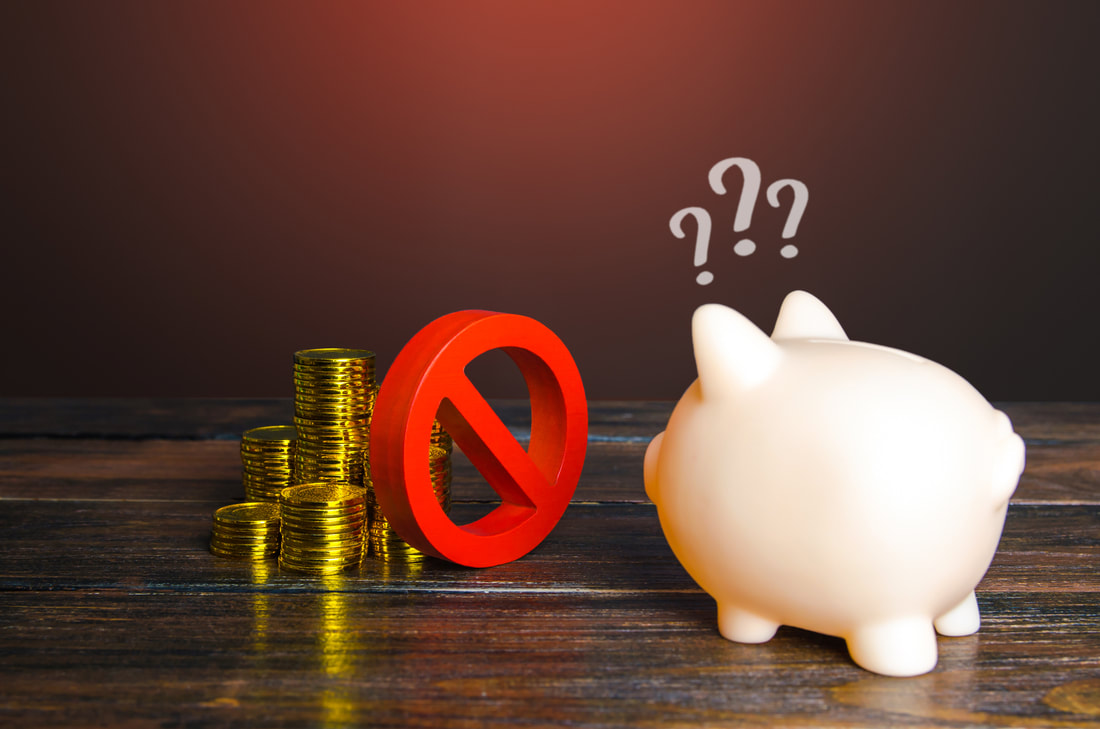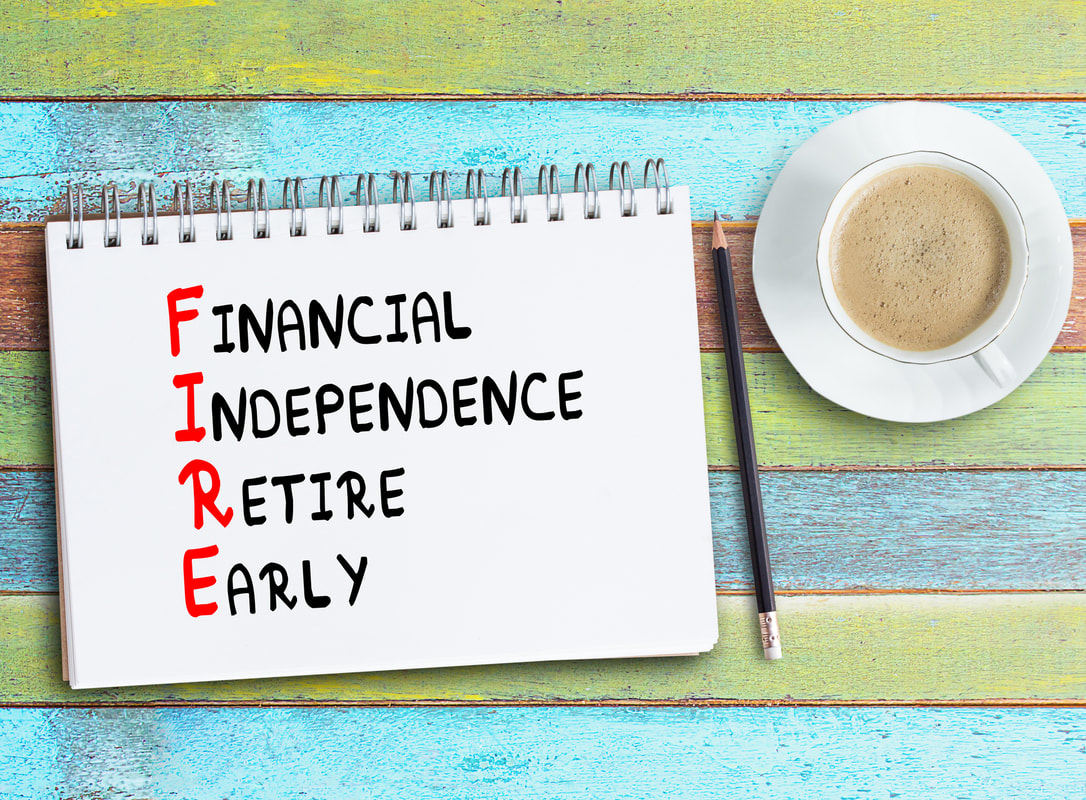Taking control of debts: a step-by-step guide to debt freedom and improved financial resilience20/7/2023 Feeling overwhelmed by debt is a common experience that can affect anyone, regardless of age or income. In fact, 57% of UK adults carry some form of non-mortgage debt, with younger age groups being more susceptible – 80% of 25-34 year olds hold consumer credit but only 18% of people aged 75 and over. Despite quite significant numbers being affected by debt, oftentimes, someone struggling with debt can feel very alone and isolated, ‘it’s just me’, and worse feelings, of shame can stop you from speaking up and confiding in someone that can help or provide moral support. This article offers a practical and empowering guide to help you confront financial stress and take control of debts while prioritising your mental wellbeing. Who is most affected by debt in the UK? The Financial Conduct Authority (one of the UK’s financial regulators) defines "low financial resilience" as having limited capacity to cope with financial shocks. For example, if they had a financial incident such as a car breaking down or the loss of income for a week, they would not be able to cope without going deeper into debt. Certain groups, such as the unemployed, gig economy workers, renters, individuals with a household income below £15,000, and black or multi-ethnic adults are more likely to experience over-indebtedness. Recognising these patterns can help you understand that your struggles with debt are not unique and that external factors can contribute to this situation. A significant portion of debt for young adults is student loan debt. How to confront the financial stress of debt and reclaim your mental health
If you find yourself struggling with debts, take the below steps to regain control of the situation: 1. Figure out how much you owe You would be forgiven for thinking paying the debt down is the most difficult step. It isn’t, frequently opening your bills or credit card statements is the hardest step by a long shot. The very thought of having to do it will bring out a stress response – increased heart rate, difficulty breathing, headaches – I have seen a range of response. And, when you finally do manage to open the bills or credit card statements it’s not uncommon to get the runs or even throw up – this is all normal. Once you’ve been through this, you’ve probably ploughed through the worst emotions. But how do you get to the point of even being able to open the statements and figure out the damage? My advice: ask a trusted friend or relative to sit with you while you do it. If you don’t have one of those, perhaps contact a debt charity to help or call your employer’s ‘employee assistance programme’ to see if they can offer the moral support needed to get the task done. At this point all you want is a list of who you owe money and how much you owe them. List it all up and add it up. Great – you now know the extent of what you owe. 2. Get your Experian credit score and read through your credit record Next, get your credit score from “Experian”. This is free. If you have never used Experian before you can also review you credit record for free for a limited period. Go through your record carefully and if there is anything you disagree with, contact them or the relevant creditor to correct the errors. Check that your list of debt from ‘1’ matches what is on your credit record 3. Create a “debts sheet” in a spread sheet List all your debts in a spreadsheet. For each debt you want the amount owed and the minimum monthly payment. I recommend paying the debts off using what is known as “the debt snowball” this means you pay the smallest debt off first then move on to the next debt. Economically, speaking it makes most logical sense to start by paying off the most expensive debt and pay off the cheapest last, however, many people find that they get a psychological boost by seeing a debt fully cleared. I agree with this logic that is why I recommend the debt snowball. However, when I’m helping people figure out how to payoff their debts I sometimes take a hybrid approach, where it makes sense. Before we start tackling each debt though, there’s one more step. 4. Analyse your income and expenses then figure out where you can cut back and how you might increase your income This is a very important step: Prepare a detailed list of your expenses and compare them to your income. Identify areas where you can cut back: for each expense item, write what you spend now and what you plan to spend going forward. Be realistic. The aim is to reduce your expenses as much as is possible so that you can create as big a gap as possible between your income and expense. Average income in the UK is about £32,000/year or £2,000/month after tax and a 5% contribution to your pension. If you’ve typically spent all your earnings each month, then cutting expenses down to £1,700 would mean you have £300 to put towards paying off debts each month. If you have a skill you can monetise during evenings and weekends then you can make some extra money as well and put all of it towards paying off your debts. You can make money online or offline. Put flyers through doors and you might be surprised at the response. I was surprised at the success I had with putting flyers through doors when I wanted to earn some extra dosh in my mid 20s. 5. Go back to “debt sheet” and figure each month out Now that you know your capacity to repay debts, pay the minimum required on each debt and direct all extra cash to smallest debt until it is paid off. Ideally, create a timeline showing how much debt will be paid off, each month until you’re fully debt free. So that paying off your debts doesn’t feel like a punishment, throwing in the odd treat will help you stick to your debt-free plan. 6. Close debt accounts As you pay off each debt, consider closing the corresponding accounts to avoid the temptation of further credit. My personal approach is to not to keep any credit cards. However, if you find having one helpful and feel you can’t live without it, then maintain just one and think carefully about how best to use it. Conclusion Taking control of debts and building financial resilience is a journey that requires determination and support. Remember, you are not alone in this struggle. By facing your debts, understanding your financial situation, and devising a practical repayment plan, you can regain control of your finances and achieve a debt-free future. Stay focused, stay resilient, and embrace the small victories along the way. You've got this! To debt freedom. References: UK Parliament, Household debt: statistics and impact on economy, Dec-2022
0 Comments
To include the State Pension or to ignore the State Pension, that is the question…when you’re retirement planning.
If you’re a millennial (born between 1981 and 1996) or later, I’ve come to a bold conclusion: it’s best to assume you won’t receive a State Pension, when you’re planning how much to save for retirement. Let me explain why… While it's likely that some form of State Pension will persist, I believe there’s a good chance that it will become much less generous or that the state retirement age will increase even further. It is also possible that it will become means-tested so only the least well-off will receive it. Because the UK population is ageing and, as a result, the cost of the State Pension is increasing, one or all of these possibilities is almost inevitable. With an ageing population, a conundrum arises: an increasing number of people require care in their later years, while the workforce available to support them through tax contributions continues to dwindle. And, as State Pensions rely on current tax collections – that is, taxes collected from today’s workers are used to pay today’s pensioners, fewer workers will shoulder the burden of supporting a larger and growing retired population. So pensions will be less generous unless something changes. How has retirement and the State Pension evolved over time? Retirement is still a rather new concept. In the past the average person worked until they physically couldn't anymore; if they were lucky, their family looked after them in old age otherwise they faced serious financial struggles (this is how it still works for many in developing economies). In the UK, the introduction of the means-tested 'Old Age Pension' in 1909 marked a big turning point, providing a modest income to people aged 70+ with an income below £21 a year. The pension payable to a single person of 25p a month is roughly equivalent to about £157/month today (if we account for inflation and the increase in average earnings over time) – very much in line with the current Basic State Pension of £156.20. But...average life expectancy in the UK was about 50 in 1909 so, most people did not reach the state retirement age. This initial State Pension didn’t require any contributions to be made in order to be entitled to it; a contributory State Pension scheme only came about in 1925 for manual workers and others earning £250 a year or less (equivalent to £12,500 in 2023 prices). It wasn’t until after the Second World War, in 1946, when the ‘Welfare State’ was created, that a contributory State Pension applied for all people. From 1946 until 1980 people with higher average earnings enjoyed a higher State Pension, however, linking State Pensions to earnings was abolished in 1980. Personally, I think the new flat rate for all is much fairer. The State Pension has become less generous over time and may need to become less generous still In terms of what the money you receive can purchase, the State Pension seems to have not changed too much since 1909 - it’s just as generous or not so generous, depending on your view, as it ever was. What has changed since the introduction of the Welfare State is the bar you need to meet in order to get a State Pension. Whereas women used to start receiving their State Pension at 60 and men at 65, now, both men and women get it at 65 for the older generation and that’s rising to 68 for my generation. In addition, while someone used to need just 30 qualifying years of National Insurance contributions or credits to get the full basic State Pension, a total of 35 years is now needed and, to get anything at all, at least 10 years of National Insurance contributions or credits is required. These changes reflect the challenges governments face in balancing the needs of retirees with the available resources. To maintain the purchasing power of pensioners, the Government has maintained a 'triple lock' since 2010; under this mechanism the basic State Pension is increased each year by either average wage increases, average price increases (i.e. inflation) or 2.5%, whichever is higher. Despite all this, to continue to be able to take care of those that need it most, more may need to be done. There is only so much that can be done to raise the qualifying age or the number of years of contributions; at some point, it may become necessary to start cutting out those that don’t really need the State Pension given their other sources of income. And if I’m honest, I wouldn’t be upset if this is where we end up because if the government can balance its books it can stop progressively increasing taxes (including through fiscal drag). What does the State Pension currently cost? Consider this: in the 2023-24 fiscal year, an estimated £124.3 billion (10.5% of public spending) is projected to be spent on State Pensions. This figure, equivalent to approximately £4,400 per household, highlights the scale of financial commitment required, particularly when you realise that UK median household disposable income (that’s income after tax) is only about £32,300. Just to give you an idea of how mind-blowing this statistic is, in my native Malawi, the government's budget for the whole year for absolutely everything is £450 per household (UK: £42,000). And, the average Malawian household is 4.3 people compared to just 2.4 people in the UK. And what’s going on with population projections? Without an increase in immigration, the UK’s natural population is projected to start declining by 2025 … that’s in two years; a lot sooner than was expected based on estimates made in 2018; at that point we didn’t expect the natural population to start declining until 2043. So, what’s the long and short of it? There’s no two ways about it, to sustain the current generosity of State Pension in the context of an ageing population, some difficult decisions will have to be made. Sustaining the system will require adjustments such as raising the retirement age further (it’s difficult to imagine, I know) or reassessing eligibility criteria. In the short-term increased immigration may help to boost tax receipts but it’s unlikely to be a long-term solution. Some thorny questions will need to be addressed on how to balance fairness and affordability when it comes to State Pensions. Having enjoyed a sneak peak into the state of our public finances, it seems sensible that if you’re planning how much to save for retirement, as we did last week, especially if you’d like to retire early, then the best approach is to view the State Pension as a bonus. It will be awesome to get it but if you find that you’re not entitled to it, then by saving as though it won’t be there, the retirement you would like to have won’t be scuppered. References How much would the original old age pension be worth today? Basic state pension rates, Royal London Why should I pay national insurance once I've paid enough for a state pension? Steve Webb (former pensions minister) A brief guide to the public finances, OBR Average household income, UK: financial year ending 2022, ONS UK natural population set to start to decline by 2025, FT Government expenditure on state pension in the United Kingdom from 1948/49+, Statista
You can listen to this episode on YouTube.
Retirement is a dream shared by many of us, but achieving it requires careful planning and early action. In this article, we’ll delve into the world of retirement savings and reveal exactly how much you need to save each month to retire comfortably. So, if you're aiming for financial independence but are possibly thinking it’s a pipe dream, buckle up and discover the key to retiring early!
Understanding the two pension types – DC and DB pensions Before we jump into the numbers, let's familiarize ourselves with the two primary types of pensions: Nowadays, most people have "defined contribution" (or DC) pensions, where the amount you and your employer contribute determines your retirement income. The risk lies with you, because your return, i.e. the pot of cash you’ll have at retirement, depends on the performance of the stock market. Previously, "defined benefit" (or DB) pensions were more common, guaranteeing a pension until death based on your final or average salary and the years of service. However, DB schemes have mostly been phased out and won’t be covered in this article. If you have a DC pension, if the stock market performs poorly you’ll either have to work longer or plan for a leaner retirement. Defined contribution schemes are sometimes called ‘money purchase’ schemes or self-invested personal pensions (SIPPs). They are similar to what Americans call 401K plans. How do you calculate your retirement "pot"? To estimate the size of the retirement fund you'll need, we can employ a simple rule of thumb. Multiply your desired annual retirement income by 25, and voila! You have worked out roughly how much you should aim to accumulate. But why 25? This is based on the ‘4% rule’ – a widely accepted guideline that suggests that withdrawing 4% of your invested pot annually, ensures your money lasts. Research has shown that even after three decades, your investments tend to grow due to average growth rates of a diversified investment fund surpassing the 4% withdrawal rate. {If the nerd in you wants to get into the maths: 4% = 4/100 and 100/4 = 25; … you don’t need to understand the maths, though, just use the rule} Estimating your retirement expenses – how much will you need to spend in retirement? Now, let's discuss the various lifestyle options and corresponding expenses you might encounter during retirement: according to research conducted by Loughborough University and the Pensions and Lifetime Savings Association, we can categorise retirement lifestyles into three levels: minimum living standard, moderate lifestyle, and comfortable lifestyle. To account for inflation experienced since these studies were done, I’ve increased the figures by 20%. To maintain a minimum living standard, a single retiree requires an annual income of £12,240, while a couple would need £18,840. For a moderate lifestyle, the figures rise to £24,240 for a single person and £34,920 for a couple. Lastly, to enjoy a comfortable retirement, aim for an income of £39,600 if you're single or £57,000 for a couple.
(source: moneyfacts.co.uk; and increased by 20%)
What are these different lifestyles assuming? A minimum living standard assumes a single retiree spends £46 per week on a food shop, has a one-week holiday and a long weekend in the UK each year, does not own a car and spends £555 a year on clothing and footwear. With a moderate lifestyle, our single retiree spends £55 on food each week, enjoys two weeks in Europe and a long weekend in the UK each year, and spends £900 on clothing and footwear each year. With a comfortable lifestyle, the single retiree spends £67 per week on their food shop, enjoys three weeks in Europe every year and spends £1,200-£1,800 on clothing and footwear each year. Calculating your investment targets Using the 4% rule and these lifestyle figures, we can estimate the amount you need to save for retirement. Here's a breakdown based on your desired lifestyle and whether you're single or part of a couple:
I know that these numbers look huge. But keep listening, I’ll show you that you can achieve them much more easily than you think.
Getting started: how much to save each month Now, let's explore the exciting part—how much you need to save each month to reach your retirement goals. Assuming you're a basic rate taxpayer, investing in a global passive fund with an average annual growth rate of 7% (we’ll discuss whether this is a reasonable assumption in a future post), aiming for the ‘comfortable’ lifestyle (i.e. £990k if single; £1.425m for couples) and ignoring the state pension (I’ll explain why in the next article) and employer contributions these are the monthly amounts you need to put into a pension account based on your starting age (rounded to the nearest 5): Each month until you’re 68 you need to save:
What the table shows is that the younger you start saving and the longer you save for, the less you need to set aside each month.
Factors that can offset the numbers Don't worry if these saving targets seem daunting because there are several factors that can actually work in your favour, offsetting even the larger amounts you need to save if you start late. Let's take a look at these positive factors:
In conclusion, securing a comfortable retirement requires forward thinking. If you didn't have this information when you started working, don't worry—now you do! There's no time like the present to start saving for your future. And here's a bonus: you can share this valuable knowledge with your children, ensuring they don't make the same mistake that many others do—starting too late. With the right strategies and a proactive approach, you can pave the way for a financially secure and fulfilling retirement. Your future is in your hands. References What Is the 4% Rule for Withdrawals in Retirement and How Much Can You Spend? Q&A: How much do I need to save for a comfortable retirement? Pensioners need a £33,000 a year income to enjoy a comfortable retirement Fidelity Retirement calculator How to get the £260,000 pension pot needed for a comfortable retirement - and why it might not be as hard as it sounds Dave Ramsey investment calculator (ignore the $sign) Fidelity.co.uk retirement calculator
Have you heard about the FIRE movement? It's an acronym for Financial Independence Retire Early. While many people interpret it literally, there's more to this movement than meets the eye. In this post, we'll delve into what FIRE truly means, dispel some common misconceptions, and explore the different aspects of achieving financial independence (or FI) and retiring early. So, let's get started!
Understanding what FIRE is and what it is not Contrary to popular belief, the FIRE movement is not a cult or a race to become a millionaire overnight. FIRE is also not about living close to the poverty line so that you can save every penny possible – in the process depriving your family of positive life experiences such as holidays. This latter interpretation is from a podcast run by one of the mainstream broadsheet newspapers! FIRE is about gaining control over your financial life and having the freedom to choose how you spend your time without worrying about money. Many attribute the beginnings of the FIRE movement to Vicki Robin and Joe Dominguez’s 1992 book, ‘Your Money or Your Life’. Let's break down FIRE into its key components: financial independence, retiring ‘early’, and what retirement means in this context. FINANCIAL INDEPENDENCE (FI) - what is FI? Financial independence is the foundation of the FIRE movement. Inevitably, you have to gain some FI before you can enjoy any of the benefits of ‘retiring early’. At its core, FI means having enough passive income from investments to cover your living expenses. However, it's important to note that there are different levels of financial independence. Regular FI – what does ‘regular’ financial independence look like? Regular financial independence ensures that your passive income can sustain your pre-retirement standard of living. This includes basic necessities such as utilities, transportation, food, clothing, and some travel. While many people in the UK aim to pay off their mortgages before retiring early, it's not a strict requirement. Lean FI – what does ‘lean’ financial independence look like? Lean financial independence focuses on covering only the essential expenses like utilities, food, transportation, and basic rental accommodation – perhaps, in a housing association or choosing to purchase the most affordable property available in an out-of-town area where property prices are much lower. Those targeting lean FI may choose not to have children or plan to retire to low cost-of-living countries in Asia or Eastern Europe (popular destinations include Thailand, Malaysia and Turkey). A just-getting-by type of FI, like this, is not most people’s idea of financial independence but it suits some minimalists. For instance, Jacob Lund Fisker, author of ‘Early Retirement Extreme’ needed only $7,000 a year to live and that meant he was FI at 30 and retired at 33! And if you think that wouldn't be possible in the UK, a very close friend of mine has lived on a similar amount for the 18 years since we graduated from uni...we'll cover their story in a future post. If Lean FI is the goal then you may plan to earn some money from temporary or part-time jobs when you retire to cover luxuries such as a special holiday; this version of Lean FI is called ‘Barista FIRE’. Fat FI – what does ‘fat’ financial independence look like? On the other end of the spectrum is fat financial independence. It represents a comfortable retirement with all necessities and desired luxuries covered. Fat FI allows for frequent holidays, dining out, a nice house, and a generous budget for food and clothing. Downsizing is probably not on the cards for FAT FI-ers. EARLY – what does retiring early mean? The "Early" in FIRE refers to retiring earlier than traditional retirement ages. The timeframe for early retirement varies depending on personal goals and circumstances. As soon as possible For some, ‘early’ means ‘as soon as possible’. Some people join the workforce with the clear objective of achieving financial independence as quickly as possible, ideally within 10 to 15 years. To achieve this, they actively pursue high-paying careers and dedicate themselves to saving and investing. Timing with family goals Others discover the FIRE movement later in life or choose to align their retirement plans with family goals. For example, they might aim to retire when their last child enters university. This could be around the age of 50 or 55. In the context of a UK state retirement age currently set at 68 for millennials – and which could rise to 70 or older by the time we actually get there – 50 is ‘well’ early. Retirement can end up being a mini-retirement While the extremely early retirees in their 30s and 40s grab most of the headlines, some may retire in their 30s or 40s but go back to ‘traditional work’ after a few years in which case the first retirement ends up only being a mini-retirement – a fantastic opportunity to do something different for a few years. How soon you want to retire informs the type of financial independence you go for. The ‘leaner’ your lifestyle, the quicker you can achieve FI. It also informs the type of career you go for: you might choose a career in finance or high tech over public service, for example, to maximise your saving potential. RETIRE – what does 'retire' mean to those on FIRE? Retiring early doesn't necessarily mean quitting work entirely. Some individuals choose to work part-time in the same career or switch to more fulfilling, passion-driven careers that may not pay as well. Others pursue non-earning hobbies, engage in charitable work, or spend quality time with their children while they're young. And others identify with the FIRE movement and want FI for the peace of mind and flexibility it offers, but haven’t decided what ‘ ‘retire early’ means for them yet. In conclusion, the FIRE movement has revolutionized the way we perceive financial independence and early retirement. It's about breaking free from the constraints of a traditional career and embracing a life filled with possibilities. Whether you aim for regular, lean, or fat financial independence, the goal remains the same—to achieve a level of passive income that affords you the freedom to live life on your terms. In my next post, we'll delve into the exciting topic of how much you need to save to embark on your ‘retirement’ journey. So, stay tuned as we uncover the secrets to financial freedom and pave the way to a future filled with endless opportunities. References: |
Heather on WealthI enjoy helping people think through their personal finances and blog about that here. Join my personal finance community at The Money Spot™. Categories
All
Archives
September 2023
|
Heather Katsonga-Woodward, a massive personal finance fanatic.
** All views expressed are my own and not those of any employer, past or present. ** Please get professional advice before re-arranging your personal finances.





 RSS Feed
RSS Feed


